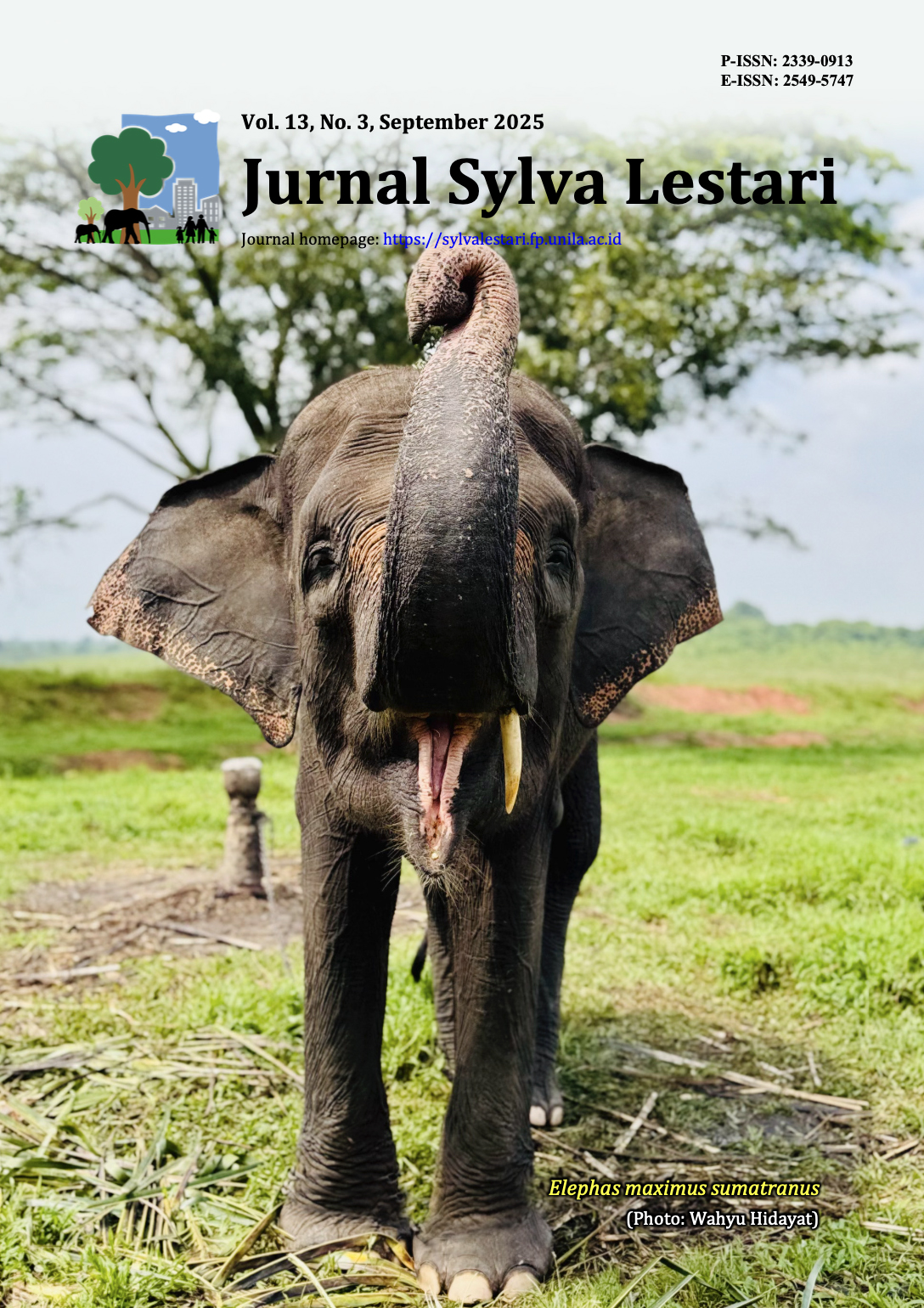Utilization of Pulp and Paper Waste as an Ameliorant in Marine Clay Soil to Increase the Growth of Eucalyptus pellita F.Muell.
DOI:
https://doi.org/10.23960/jsl.v13i3.1145Abstract
Marine clay land is formed due to hydrological factors, including acidity, low macronutrient levels, relatively high micronutrient levels, and a clay-dominant texture. Land improvement for marine clay land is necessary to enhance plant growth and productivity. Eucalyptus pellita is a plant that is adaptive to various types of land and is used as a raw material for pulp and paper, which is widely cultivated in Industrial Plantation Forest (HTI) in Indonesia. Research is needed to enhance the quality of marine clay soils and promote plant growth. Land quality can be improved by adding soil ameliorants from surrounding waste, such as waste from HTI, specifically pulp and paper sludge (KCa). This study used a combination of organic ameliorants (cocopeat and cattle manure) and inorganic (KCa, KCl, and dolomite), using a factorial complete random design consisting of two factors. The first factor was inorganic ameliorants, which consisted of four levels: A0 (no inorganic ameliorant), A1 (KCa 25 g), A2 (KCl 25 g), and A3 (dolomite 25 g). The second factor is organic ameliorants, which consists of 7 levels: B0 (no organic ameliorant); B1 (cocopeat 200 g); B2 (cocopeat 100 g); B3 (cocopeat 50 g); B4 (cattle manure 200 g); B5 (cattle manure 100 g); and B6 (cattle manure 50 g). The interaction of these two treatment factors resulted in 28 treatment combinations. A total of 1 kg of sterilized marine clay soil was placed in a polybag, then ameliorants were added according to the experimental design. The purpose of this study is to utilize HTI industrial waste as a soil ameliorant and to analyze the optimal dose of the ameliorant used during the study. The results of this study indicate that improving the quality of marine clay soil using a combination of organic and inorganic ameliorants enhances the growth in height and diameter of E. pellita compared to treatments using single ameliorants. The results showed that the treatment with B2A1 (Cocopeat 100 g and KCa 25 g) was the most effective, yielding the highest growth response, diameter, and number of leaves compared to other treatments.
Keywords: marginal land, plant growth, sludge, soil improvement, waste utilization
Downloads
Downloads
Published
How to Cite
Issue
Section
Statistics
 Abstract views: 356 times
Abstract views: 356 times PDF downloaded: 313 times
PDF downloaded: 313 times
Metrics
License
Copyright (c) 2025 Khoryfatul Munawaroh, Muhammad Hafidz, Faradila Mei Jayani, Rio Ardiansyah Murda, Jarwinda

This work is licensed under a Creative Commons Attribution-NonCommercial 4.0 International License.
Authors retain copyright and grant the journal right of first publication with the work simultaneously licensed under a Creative Commons Attribution-NonCommercial 4.0 Licence that allows others to share the work with an acknowledgement of the work's authorship and initial publication in this journal.
Authors are able to enter into separate, additional contractual arrangements for the non-exclusive distribution of the journal's published version of the work (e.g., post it to an institutional repository or publish it in a book), with an acknowledgement of its initial publication in this journal.
Authors are permitted and encouraged to post their work online (e.g., in institutional repositories or on their website) prior to and during the submission process, as it can lead to productive exchanges, as well as earlier and greater citation of published work (See The Effect of Open Access).









